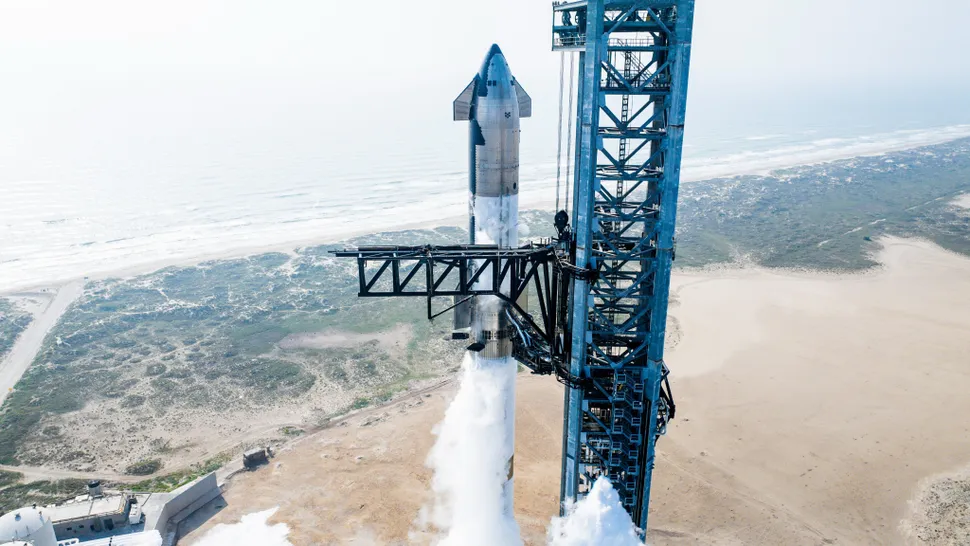We may be less than two weeks away from Starship’s next test flight.
SpaceX announced today (May 24) that it’s targeting June 5 for the fourth-ever liftoff of Starship, the giant vehicle it’s developing to get people and cargo to the moon, Mars and beyond.
That date is written in pencil rather than pen, however, for SpaceX still needs to secure regulatory approval — specifically, the U.S. Federal Aviation Administration’s acceptance of a Starship launch license modification.
Provided that paperwork comes through and no technical issues arise, Starship will launch June 5 from SpaceX’s Starbase site in South Texas, during a window that opens as early as 8 a.m. EDT (1200 GMT; 7 a.m. local Texas time).
You’ll be able to watch the action, of course; SpaceX will stream the launch live via X, beginning 30 minutes before liftoff, the company wrote in a newly posted description of the upcoming flight.
The 400-foot-tall (122 meters) Starship has flown three times to date, in April 2023, November 2023 and March 14 of this year. The megarocket has performed better on each successive flight.
Starship’s two stages — known as Super Heavy and Starship, or just Ship — failed to separate on the debut mission, which ended after just four minutes. Stage separation occurred successfully on Flight 2, which lasted about eight minutes. Flight 3 continued for nearly 50 minutes and saw Ship reach orbital velocity; it ended when Ship broke apart upon reentry to Earth’s atmosphere. (Super Heavy broke apart as well, near the end of its descent toward a planned splashdown in the Gulf of Mexico.)
SpaceX aims to continue improving on Flight 4.
“The fourth flight test turns our focus from achieving orbit to demonstrating the ability to return and reuse Starship and Super Heavy,” SpaceX wrote in the mission description. “The primary objectives will be executing a landing burn and soft splashdown in the Gulf of Mexico with the Super Heavy booster, and achieving a controlled entry of Starship.”
SpaceX has made multiple modifications to Starship in the wake of Flight 3, the company said in a post-mortem report about the March mission that it posted today (May 24).
For example, SpaceX determined that some of Super Heavy’s Raptor engines shut down early during its “boostback” burn on Flight 3 and failed to relight as planned during its landing burn shortly thereafter. Engineers traced this issue to a “filter blockage” that affected the flow of liquid oxygen to the engines. (Raptors burn liquid oxygen and liquid methane.)
“SpaceX implemented hardware changes ahead of Flight 3 to mitigate this issue,” the company wrote in today’s report. “Super Heavy boosters for Flight 4 and beyond will get additional hardware inside oxygen tanks to further improve propellant filtration capabilities.”
Ship, meanwhile, succumbed to the tremendous forces of frictional heating during reentry on Flight 3 after losing attitude control and beginning to roll. SpaceX has learned from this problem as well, and taken measures to reduce the chances that it will happen again.
“The most likely root cause of the unplanned roll was determined to be clogging of the valves responsible for roll control,” SpaceX wrote in today’s report. “SpaceX has since added additional roll control thrusters on upcoming Starships to improve attitude control redundancy and upgraded hardware for improved resilience to blockage.”
Source: https://www.space.com/spacex-targeting-june-5-starship-fourth-test-flight



